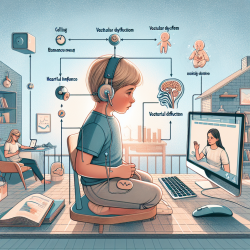Introduction
The integration of Positron Emission Tomography (PET) and Magnetic Resonance Imaging (MRI) has marked a significant advancement in the field of oncology. The recent consensus recommendation by the EANM-SNMMI-ISMRM provides a comprehensive guide for practitioners on the application of PET/MRI in oncology. This blog aims to distill key insights from the research to enhance clinical practice and encourage further exploration of this innovative technology.
Understanding PET/MRI Technology
PET/MRI combines the metabolic and molecular imaging capabilities of PET with the superior soft tissue contrast of MRI. This synergy allows for detailed anatomical and functional imaging, which is particularly beneficial in oncology for accurate disease staging, monitoring, and treatment response assessment. The consensus guidelines emphasize the importance of a standardized imaging protocol to ensure consistency and reliability across clinical settings.
Key Recommendations for Practitioners
- Standardized Protocols: Implementing a common imaging protocol is crucial for ensuring repeatability and comparability of results, both within a single institution and across multicenter trials.
- Quality Assurance: Regular quality control measures are essential to maintain the accuracy and precision of PET/MRI imaging. This includes daily system checks and periodic recalibration.
- Personnel Training: Adequate training for all personnel involved in PET/MRI operations is vital. This includes understanding both PET and MRI components and ensuring compliance with safety protocols.
Clinical Applications and Benefits
PET/MRI is particularly advantageous in complex oncological cases where precise localization and characterization of lesions are required. The technology offers improved diagnostic accuracy and can potentially reduce the need for multiple imaging sessions, thus enhancing patient comfort and reducing overall healthcare costs.
Encouraging Further Research
While the current guidelines provide a solid foundation, the field of PET/MRI is rapidly evolving. Practitioners are encouraged to engage in ongoing research and clinical trials to explore new applications and refine existing protocols. This continuous learning approach will help maximize the potential of PET/MRI in improving patient outcomes.
Conclusion
Adopting the EANM-SNMMI-ISMRM consensus recommendations can significantly enhance the effectiveness of PET/MRI in oncology. By focusing on standardized protocols, quality assurance, and comprehensive training, practitioners can leverage this technology to deliver superior patient care. For those interested in delving deeper into the research, the original paper can be accessed here.










